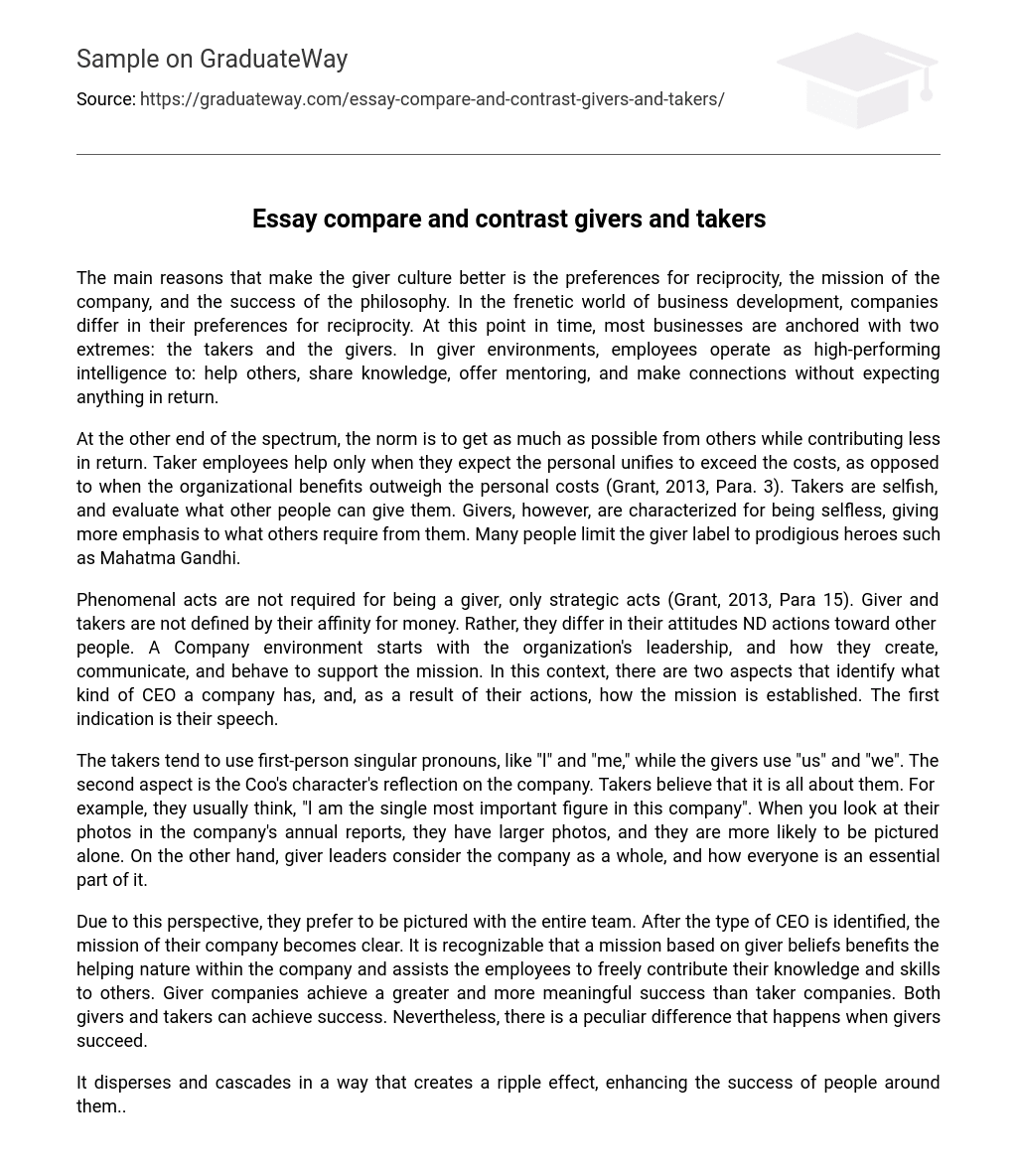The main reasons that make the giver culture better is the preferences for reciprocity, the mission of the company, and the success of the philosophy. In the frenetic world of business development, companies differ in their preferences for reciprocity. At this point in time, most businesses are anchored with two extremes: the takers and the givers. In giver environments, employees operate as high-performing intelligence to: help others, share knowledge, offer mentoring, and make connections without expecting anything in return.
At the other end of the spectrum, the norm is to get as much as possible from others while contributing less in return. Taker employees help only when they expect the personal unifies to exceed the costs, as opposed to when the organizational benefits outweigh the personal costs (Grant, 2013, Para. 3). Takers are selfish, and evaluate what other people can give them. Givers, however, are characterized for being selfless, giving more emphasis to what others require from them. Many people limit the giver label to prodigious heroes such as Mahatma Gandhi.
Phenomenal acts are not required for being a giver, only strategic acts (Grant, 2013, Para 15). Giver and takers are not defined by their affinity for money. Rather, they differ in their attitudes ND actions toward other people. A Company environment starts with the organization’s leadership, and how they create, communicate, and behave to support the mission. In this context, there are two aspects that identify what kind of CEO a company has, and, as a result of their actions, how the mission is established. The first indication is their speech.
The takers tend to use first-person singular pronouns, like “l” and “me,” while the givers use “us” and “we”. The second aspect is the Coo’s character’s reflection on the company. Takers believe that it is all about them. For example, they usually think, “l am the single most important figure in this company”. When you look at their photos in the company’s annual reports, they have larger photos, and they are more likely to be pictured alone. On the other hand, giver leaders consider the company as a whole, and how everyone is an essential part of it.
Due to this perspective, they prefer to be pictured with the entire team. After the type of CEO is identified, the mission of their company becomes clear. It is recognizable that a mission based on giver beliefs benefits the helping nature within the company and assists the employees to freely contribute their knowledge and skills to others. Giver companies achieve a greater and more meaningful success than taker companies. Both givers and takers can achieve success. Nevertheless, there is a peculiar difference that happens when givers succeed.
It disperses and cascades in a way that creates a ripple effect, enhancing the success of people around them.. In consequence, people around them are rooting for and supporting them. Unlike givers, when takers win, there is usually someone else who loses, and people tend to new successful takers. The principal difference lies in how giver success creates alee, instead of Just claiming it (Poppa, 2013, Para 17). The approach to a giver’s success is determined over a long period of time.
The results of the strategies are not immediate; however, it has a long-term repercussion in the company development. In contrast to givers, takers may achieve success, but it is likely to be short-lived and not rooted in meaningful or equitable relationships (Stranger, 2013, Para. 4). In fact, the patterns of success based on reciprocity giver’s philosophy are remarkably efficient. In conclusion, givers and takers are philosophies of business interaction, but the nines between them are defined by differences in reciprocity, mission, and work outcomes.





